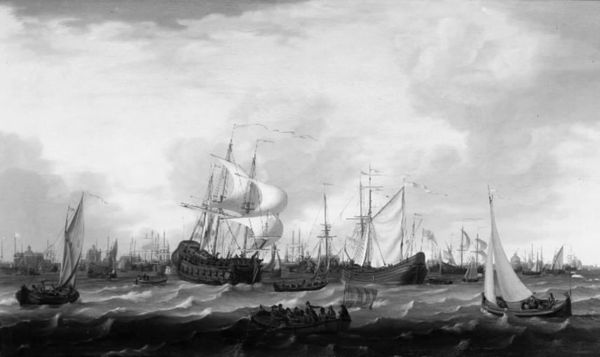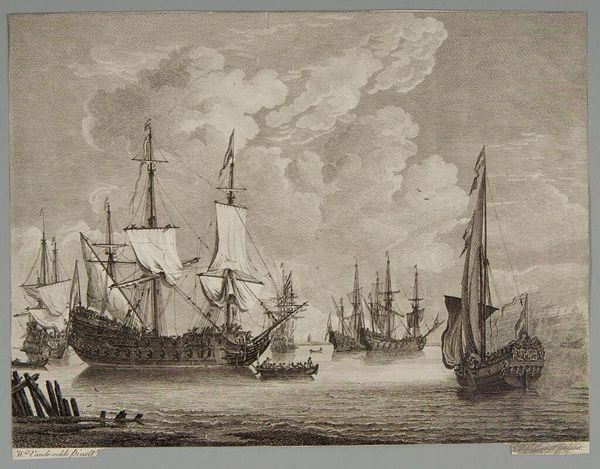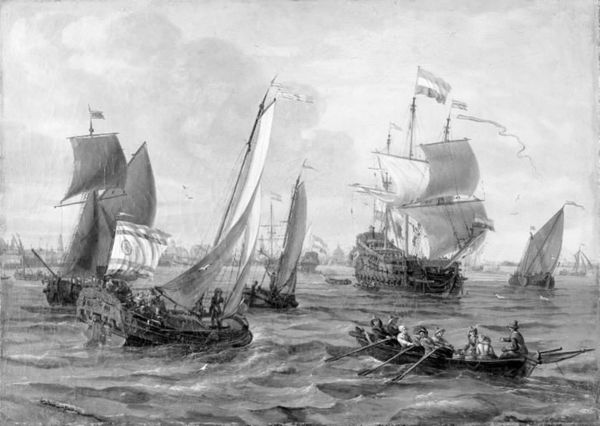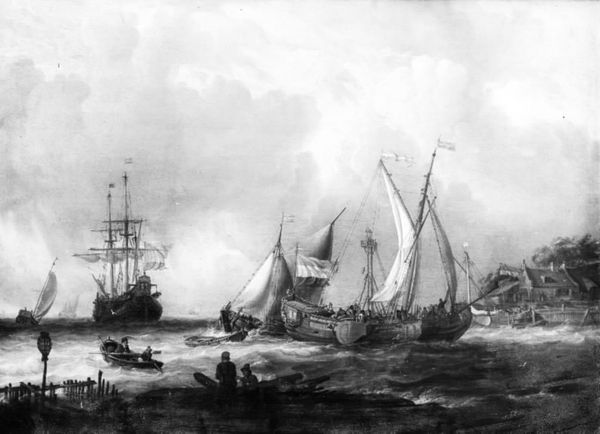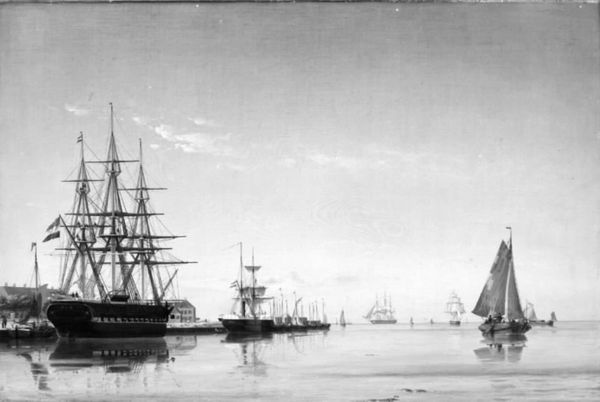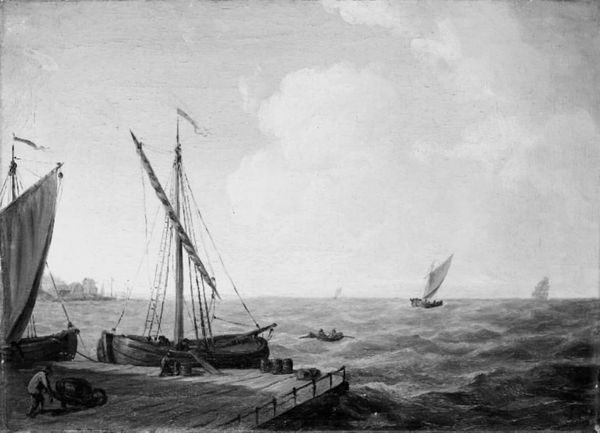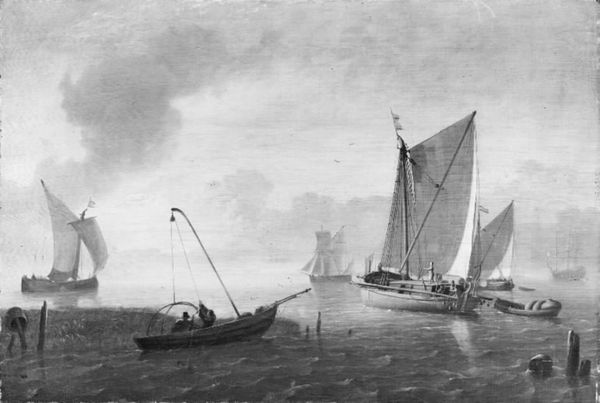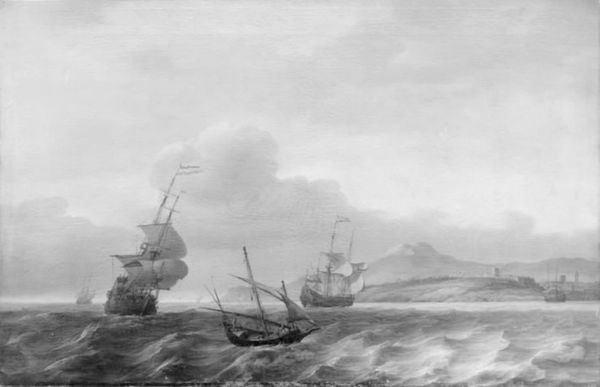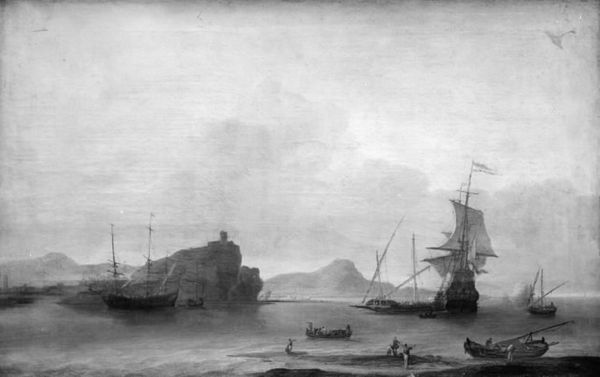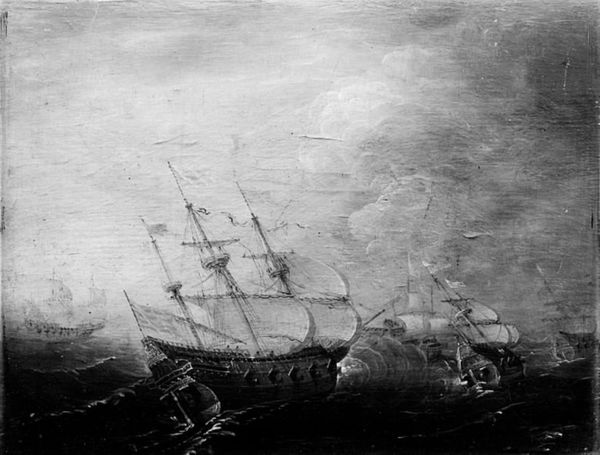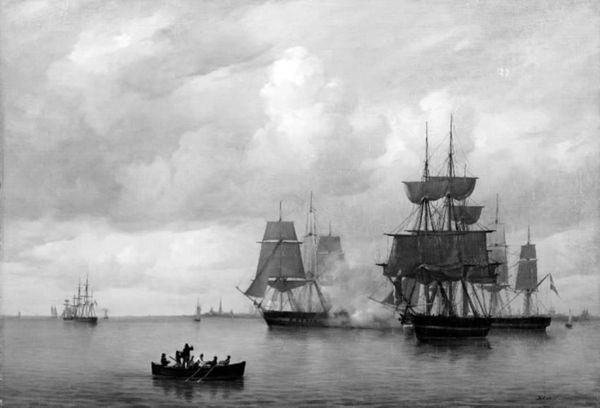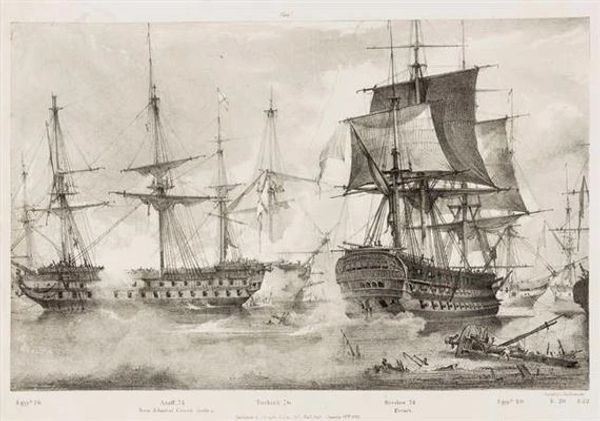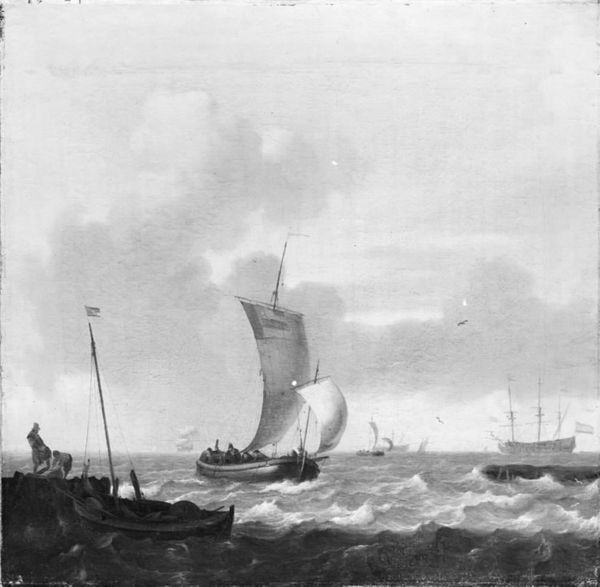
painting, oil-paint, canvas
#
dutch-golden-age
#
painting
#
oil-paint
#
landscape
#
canvas
#
cityscape
Dimensions: 42 cm (height) x 62 cm (width) (Netto)
Editor: This is “Evening. Amsterdam in the background” by Ludolf Bakhuizen, probably painted between 1646 and 1708 using oil on canvas. It has a really serene feeling, almost melancholic. What symbols and cultural references might be embedded here? Curator: The ships themselves become powerful symbols. This wasn't just a portrait of Amsterdam; it's a portrait of Dutch power, their global reach embodied in these vessels. Consider, how might these ships be perceived not just as transport, but as a projection of national identity and even ambition? Editor: That’s fascinating. The size and prominence of the large ship versus the smaller boats seem intentional. Is that about power dynamics too? Curator: Exactly. Size in maritime art often reflects not just practicalities but hierarchies. What emotions are evoked by seeing the small boats almost dwarfed? The single person standing in one smaller boat seems particularly significant; does he represent ambition or perhaps something else? Editor: Humility, perhaps? The vastness of the sea and sky… maybe human insignificance? Curator: Precisely. The symbolism shifts, revealing multiple layers. Consider how our modern perception might differ from how a 17th-century viewer understood it. Does our understanding of colonialism change the symbols? Editor: That's a point. We now bring that historical lens. I never thought about art this way – actively decoding its embedded meanings. Curator: And these meanings change with the tides of time, reshaping the symbols and the feelings that they convey. Art becomes a repository for a culture’s evolving story.
Comments
No comments
Be the first to comment and join the conversation on the ultimate creative platform.
